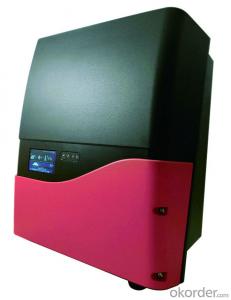Reset Solar Inverter
Reset Solar Inverter Related Searches
Reset Solar Edge Inverter Resetting Solar Inverter Solar Edge Inverter Reset Upgrade Solar Inverter Solar Inverter Upgrade Convert Inverter To Solar Install Solar Inverter Buy Solar Inverter Turn Off Solar Inverter Xantrex Solar Inverter Recall Rec Solar Inverter Solar Solar Inverter Solar Inverter Replacement Solar Power To Inverter Solar Inverter Set Solar Inverter Broken Solar To Inverter Replacing A Solar Inverter Inverter Solar Faulty Solar Inverter Broken Solar Inverter Refusol Solar Inverter About Solar Inverter Solar Inverter Configuration Solar Panel Inverter Setup Smart Inverter Solar Solar Ups Inverter Plug In Solar Inverter Smart Solar Inverter Refu Solar InverterReset Solar Inverter Supplier & Manufacturer from China
Reset Solar Inverter is a specialized product designed to optimize the performance and efficiency of solar energy systems. It plays a crucial role in converting the direct current (DC) generated by solar panels into alternating current (AC) that can be used by homes and businesses. This conversion process is essential for harnessing the full potential of solar power and ensuring that it can be integrated seamlessly into existing electrical grids.The Reset Solar Inverter is widely used in various applications, including residential, commercial, and industrial settings. It is particularly beneficial in areas where there is a high demand for clean, renewable energy, and where traditional power sources may be unreliable or insufficient. By utilizing solar inverters, users can take advantage of the abundant sunlight and reduce their reliance on fossil fuels, ultimately contributing to a more sustainable and eco-friendly environment.
As a leading wholesale supplier, Okorder.com offers a vast inventory of Reset Solar Inverter products, catering to the diverse needs of customers worldwide. With a commitment to quality and customer satisfaction, Okorder.com ensures that each Reset Solar Inverter is thoroughly tested and meets the highest industry standards. This extensive selection allows customers to find the perfect inverter for their specific solar energy requirements, whether they are looking for a compact residential model or a large-scale commercial solution.
Hot Products


















































